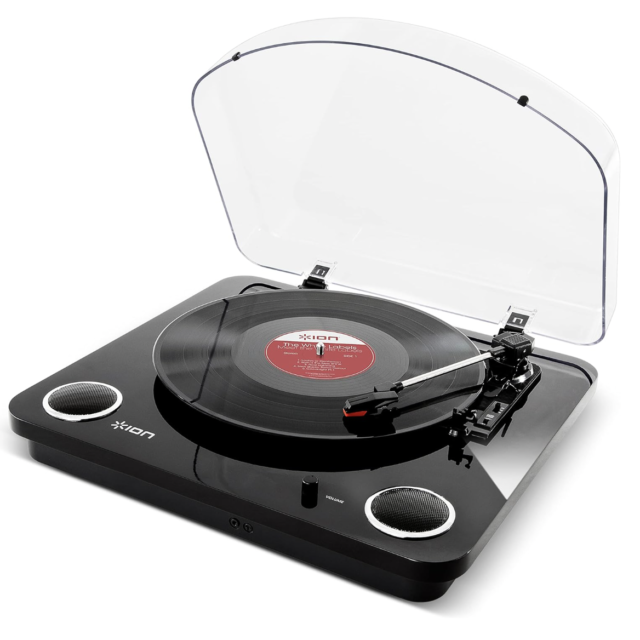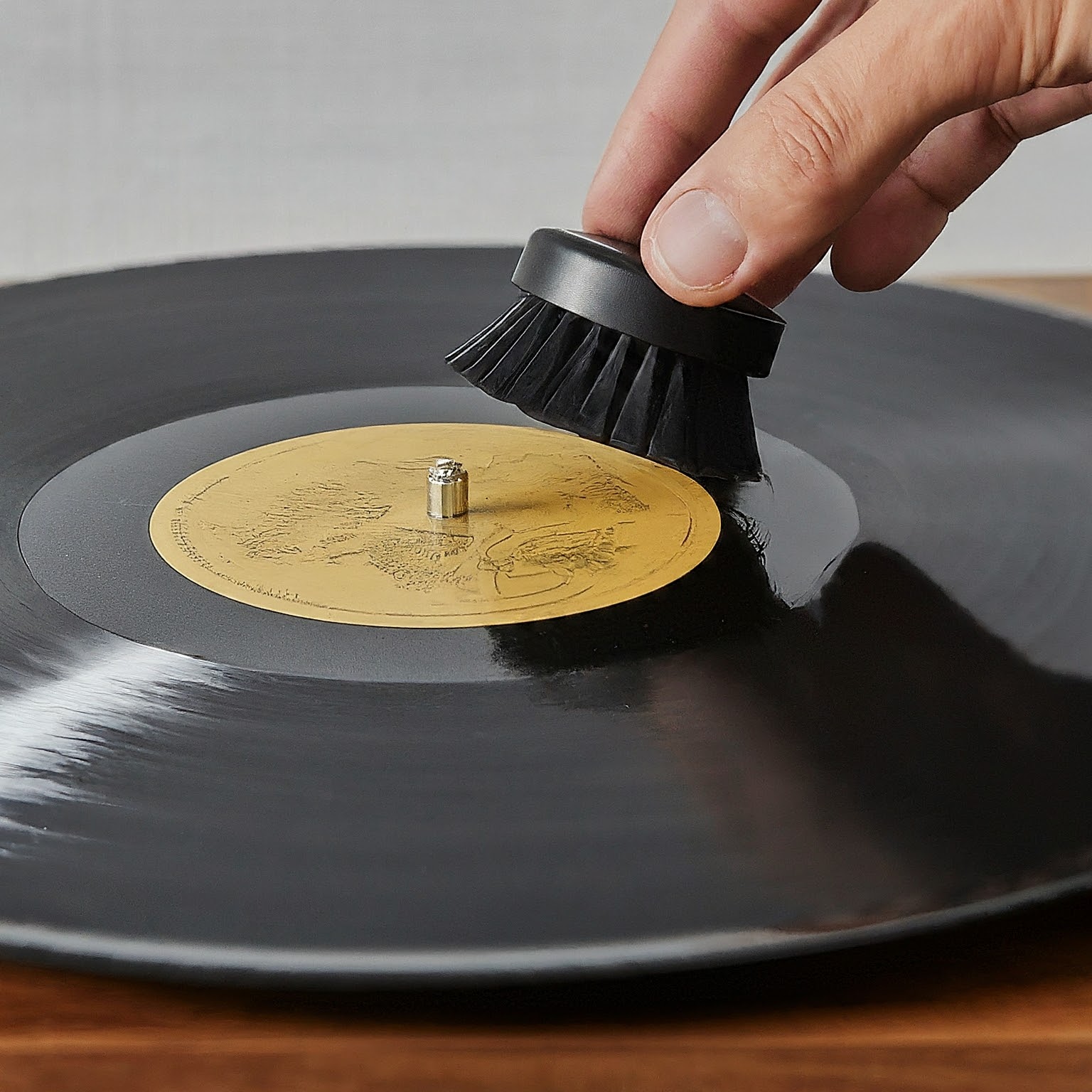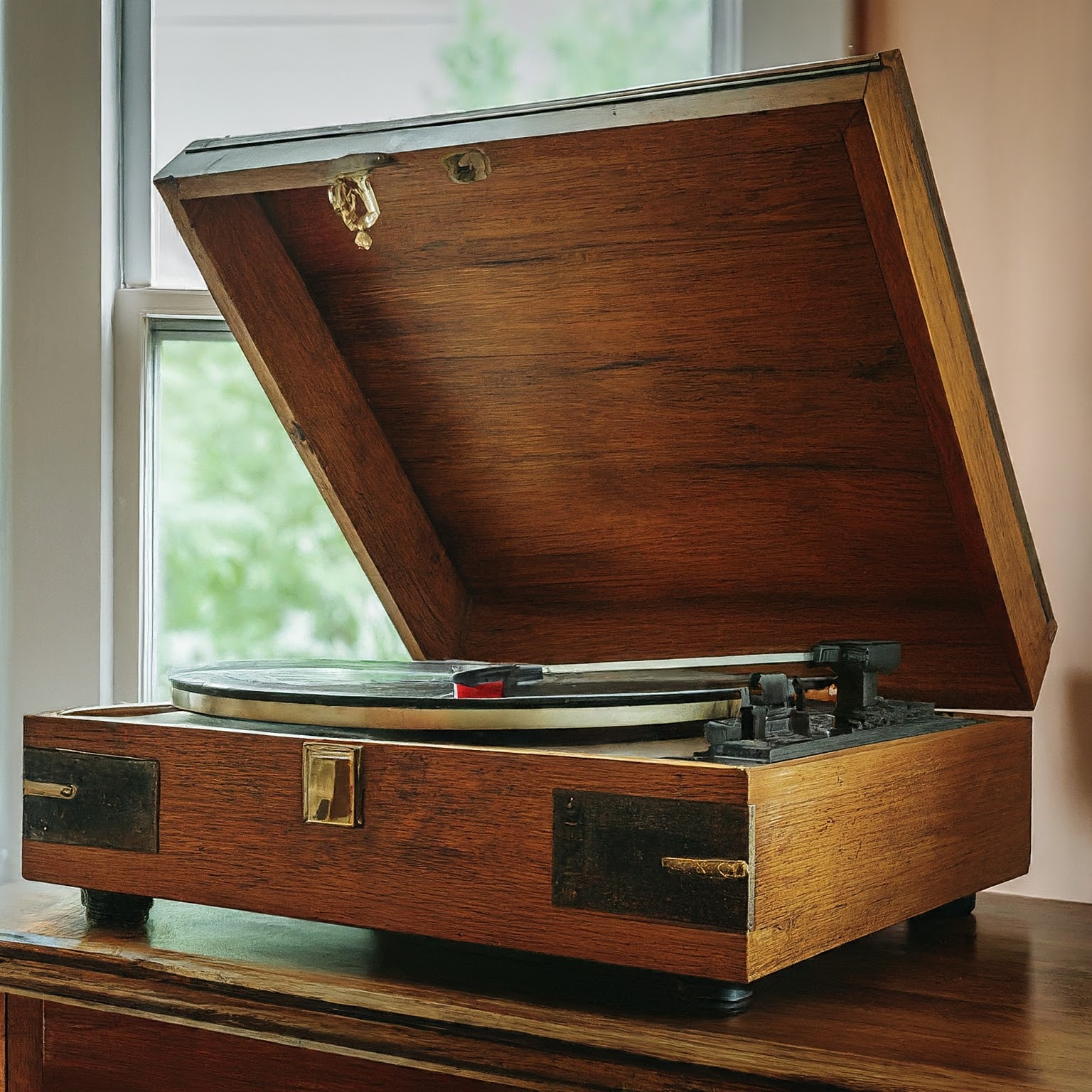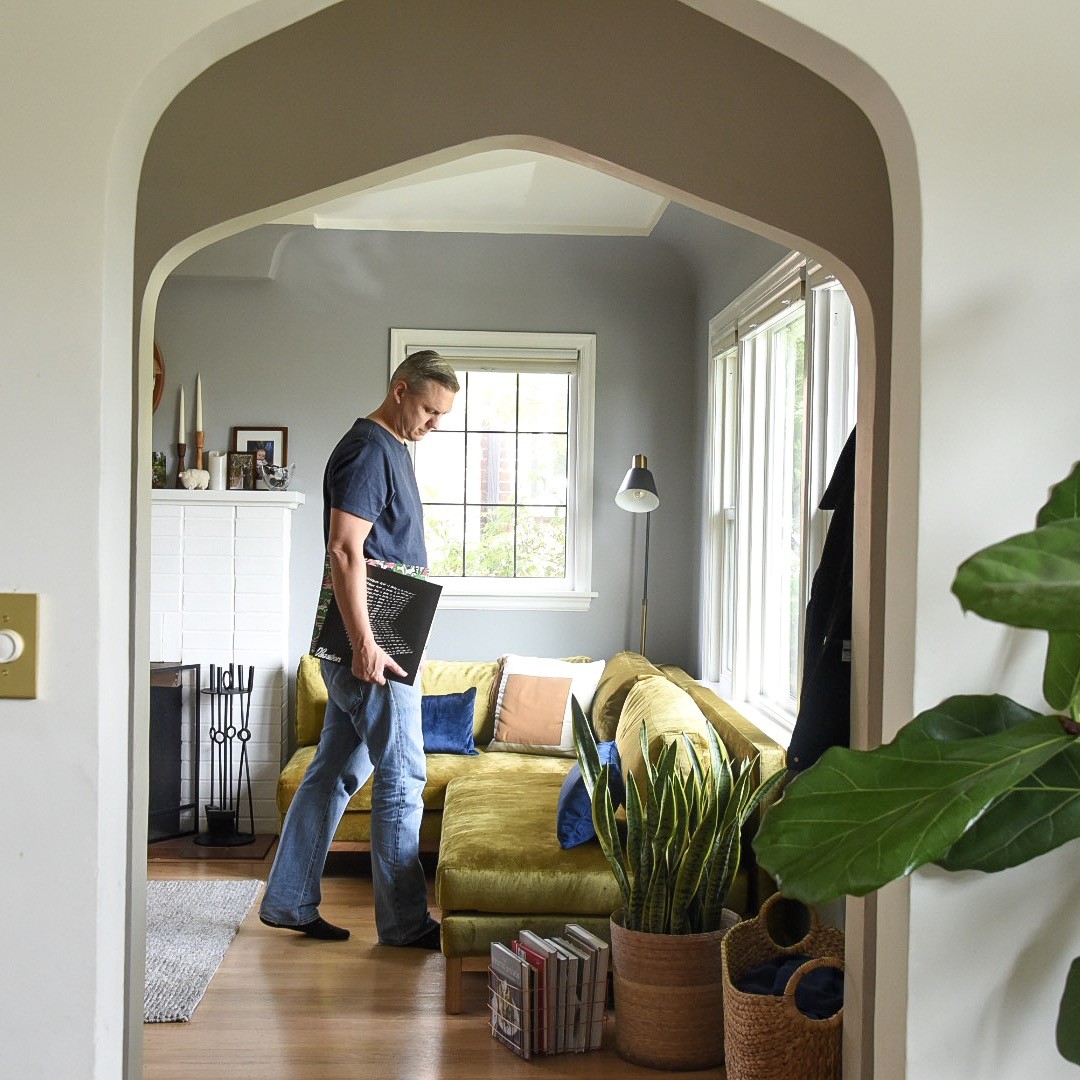
This is a sponsored post in partnership with Interior Define. All words and opinions are our own. Thank you for supporting the brands that help us do what we do!
I’ve always dreamed of having a dedicated listening space. A room dedicated purely to listening to records that’s been decked out completely with high end audio equipment.
In theory, I could easily transform our guest bedroom into just such a space. But the reality is that even if I had such a space, I’d probably rarely use it. I have three kids. I have my own law practice. And I run my own record label. It’s just not realistic to think I’ll be able to spend hours sitting in a private listening room jamming out to Men I Trust or Radiohead. In fact, although we call a room in our basement our “media room,” all of my best equipment resides in our living room. That’s because that’s where I listen to music the most.
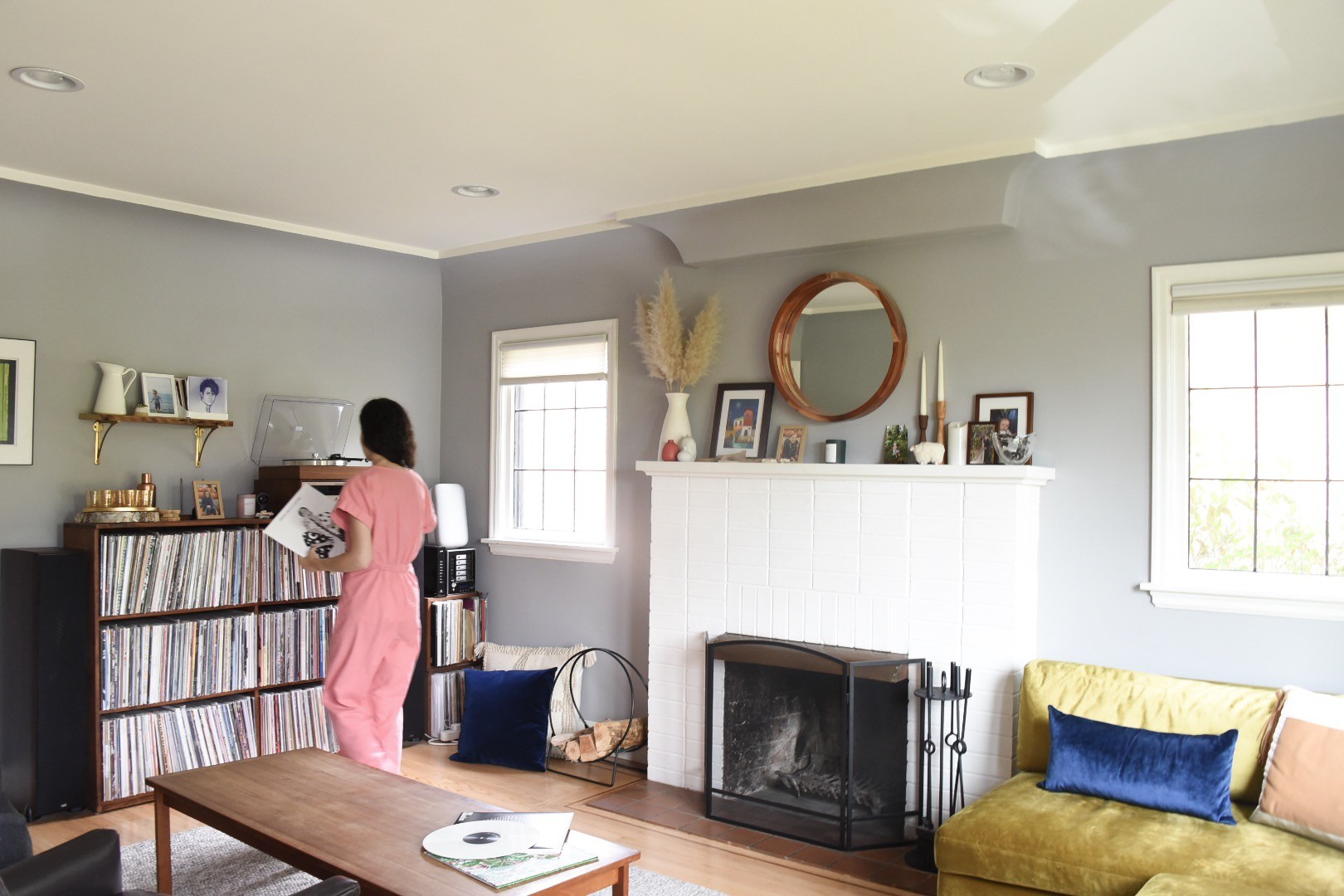
That’s where this guide will differ a little from a lot of other audio setup guides. I want to help you get the most audiophile sound out of a normal living space, as opposed to a dedicated listening room. Because, let’s be honest, most of us don’t have the space or time to create a listening room.
Nonetheless, if you want to get the most out of your system, you’ll still want to get your placement right. Whether or not that means rearranging your furniture is up to you. Ultimately, creating a great listening space at home comes down to a consideration of three main factors:
- Speaker placement
- A comfortable space to sit
- Environmental factors

Consider speaker placement for optimal sound
Obviously, the most important aspect of a good stereo system is the system itself. You’ll need a good receiver and/or integrated preamp; good speakers; and a good turntable. If you’re looking for tips for building your setup you’ll want to check out our guide to the Best Turntables and Record Players.
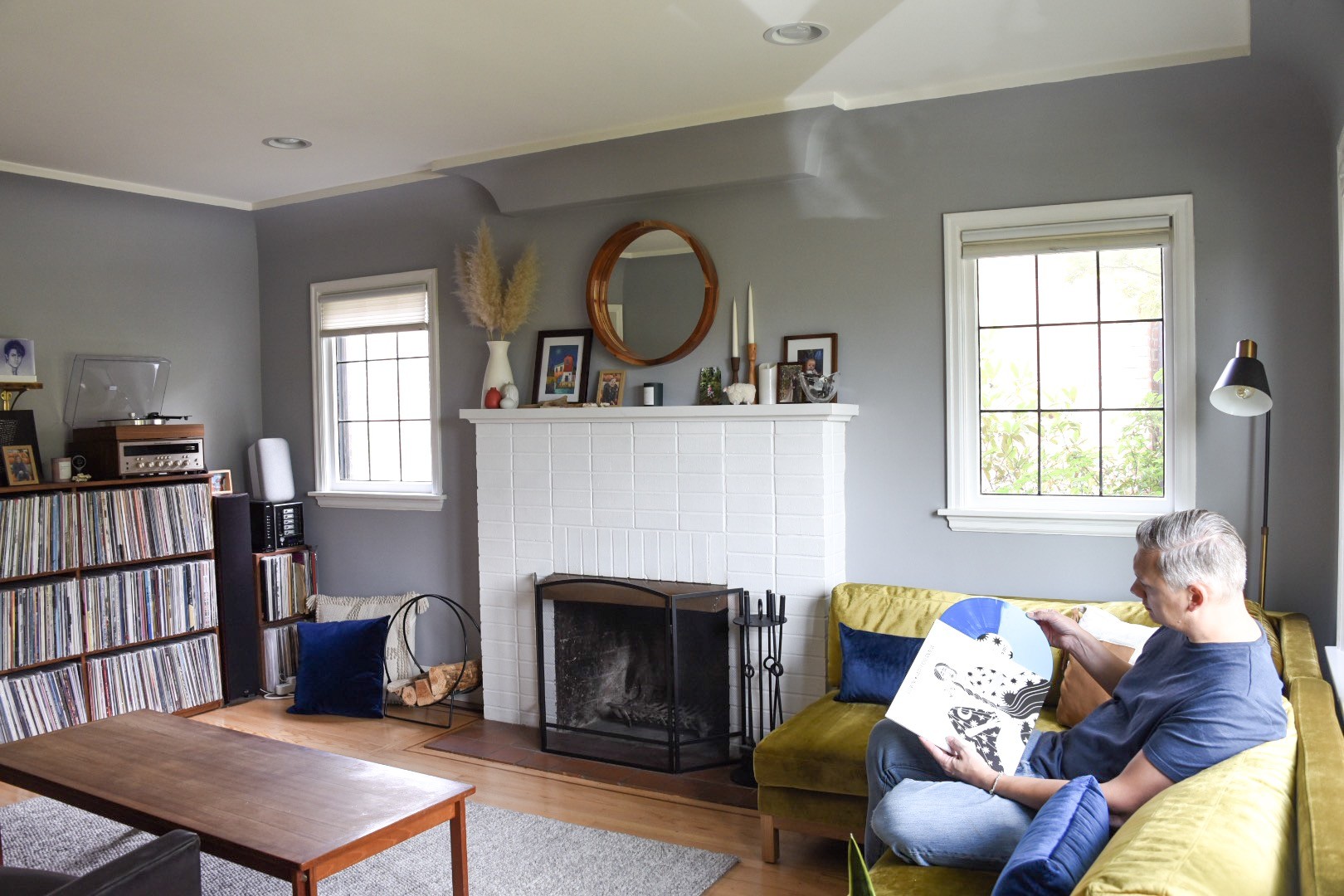
After you have your system, the next most important aspect of your listening room is probably speaker placement (i.e. where you actually place your speakers in your room). Here’s how to properly position your speakers:
Create a Sound Triangle
Begin by creating a sound triangle. Basically this means that the distance between you and each of your speakers should form a triangle with three equal sides.
Angle Speakers Towards You
Next, angle your speakers towards where you’ll be sitting. This will help you to create a good soundstage. When we’re talking about creating a soundstage it means that you should be able to close your eyes and visualize the physical space where the band is playing. Angling the speakers towards you will help make sure that the sound is traveling directly to your ears with less interference and should be cleaner.
Position Speakers at Ear Level
Position your speakers at ear level for where you’ll be sitting when listening to your records. If you’re using bookshelf speakers, you may need to consider a pair of speaker stands to get the speakers to the proper height.
Move Speakers Away From The Wall
Finally, avoid placing your speakers right up against the wall in order to prevent over-emphasized bass. Moving them out, as much as 6 inches, can help keep bass tight and clean.
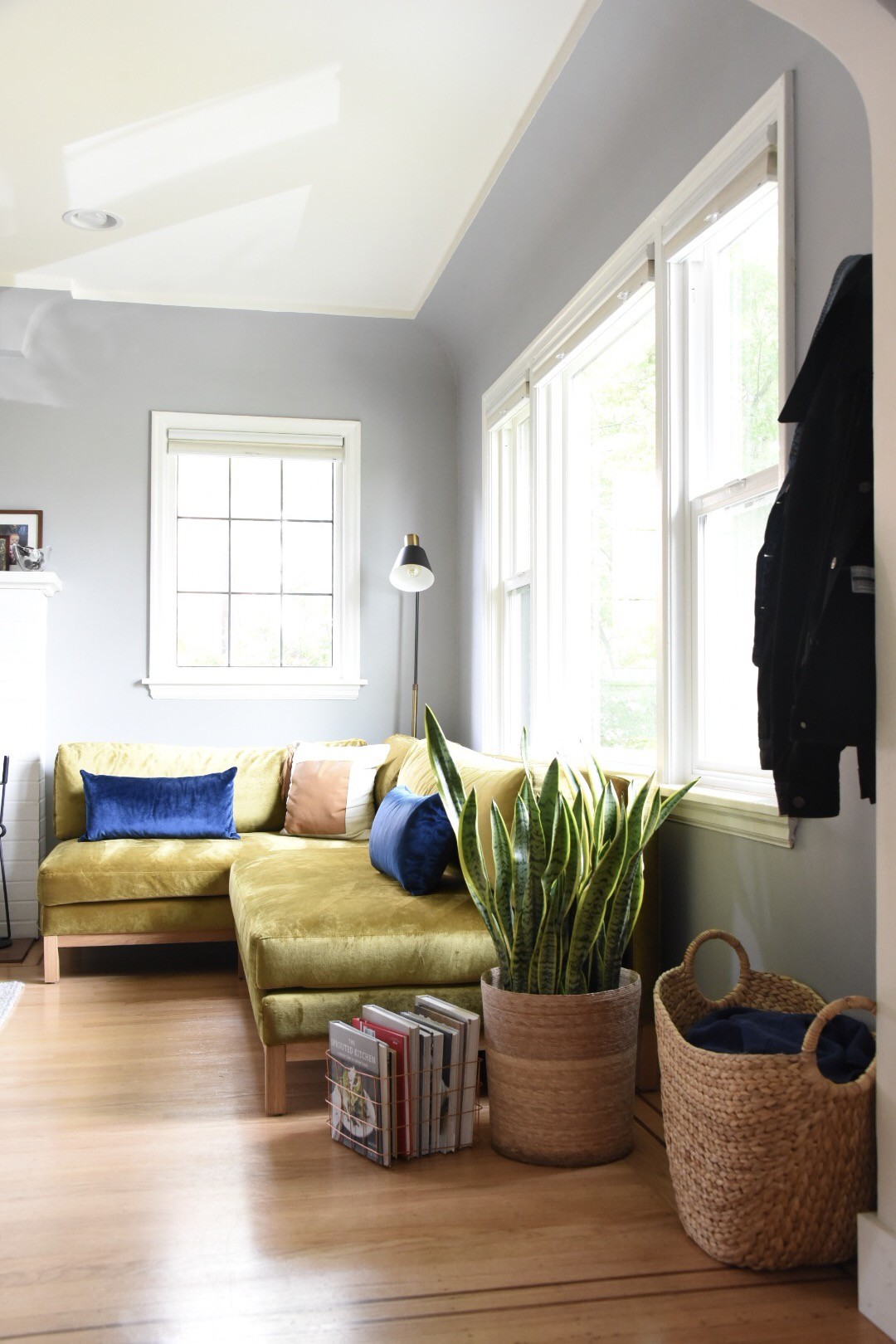
Make a comfortable listening space
As important as it is to make sure you have your speaker placement properly aligned, you want your listening space to be comfortable. After all, if you’re listening to full length albums you’ll be sitting in this space for at least an hour at a time on most occasions.
We like to entertain and, as I mentioned above, our listening space is our living room. As a result, we recently acquired a chaise sectional sofa from Interior Define (the Jasper in mod velvet).
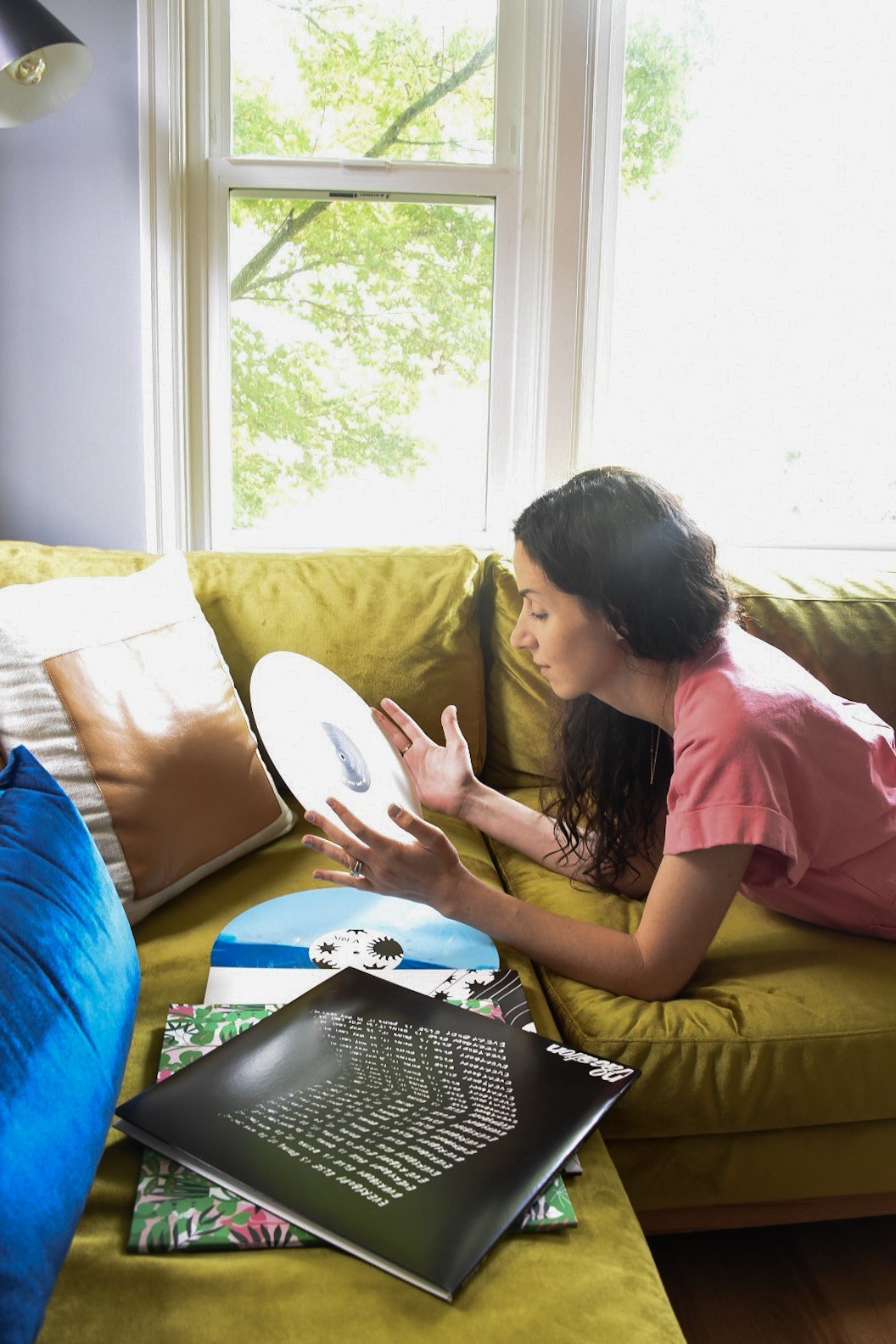
It’s perfect for our listening space. The velvet material is incredibly soft and cozy and I also like that I can kick my feet up, lay down, or just sit normally. And, as I mentioned before, I’m a married father of three and we’re all music lovers in this home. Our new sectional can easily seat the entire family. Oh, and it’s absolutely gorgeous — so there’s that too. If you’re feeling our style, know that Interior Define’s couches are all custom made and come in a series of styles.
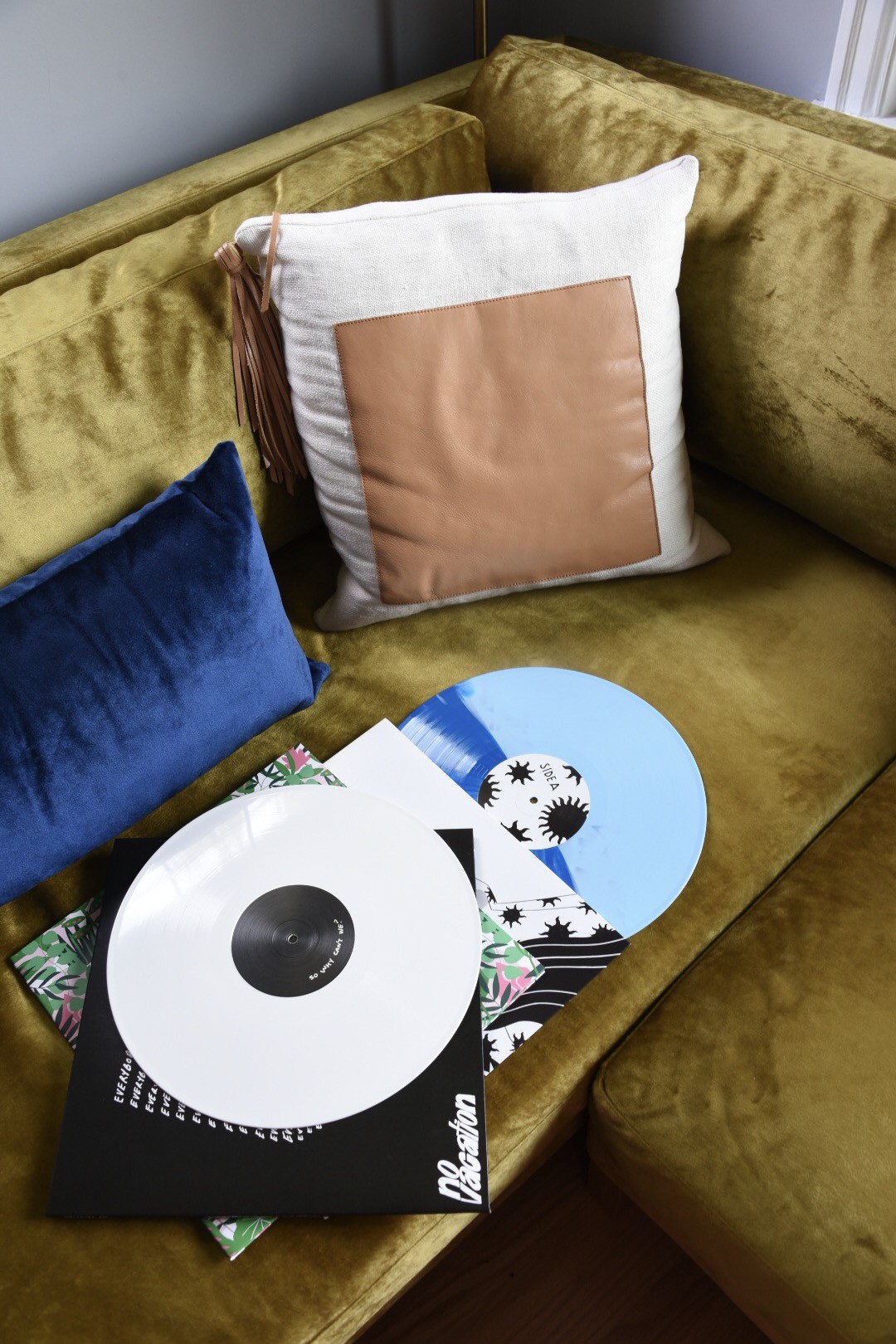
Obviously the perfect seating space for you will depend on your tastes and preferences. Ultimately, it just needs to be a place you’ll be comfortable listening to music for an hour or more.
Consider environmental factors
For the purposes of this post, I’m using environmental factors as a shorthand for all of the other things about your listening space that can affect your listening experience: your flooring, windows, other pieces of furniture between the speakers and the space you’ll be listening from, and so on.
The sound you hear in any given room is a combination of the sound that directly travels to your ears and the reflected sound that bounces off of something else before making its way to your ears.
Reflected sound isn’t a bad thing. Without any reflected sound, you’d lose a lot of bass and depth to your music. But too much reflected sound can lead to a loss of clarity and precision.
In a dedicated listening room, you’d typically consider acoustic panels, bass traps, and other acoustic treatments in order to absorb unwanted frequencies. We’re not going that deep here because our presumption is that this isn’t a dedicated listening space and you’ll want to make as few changes to the aesthetic and character of your room as possible. However, I will note that there are plenty of stylish acoustic panels on the market that won’t distract from the character of your room if you want to go that direction.
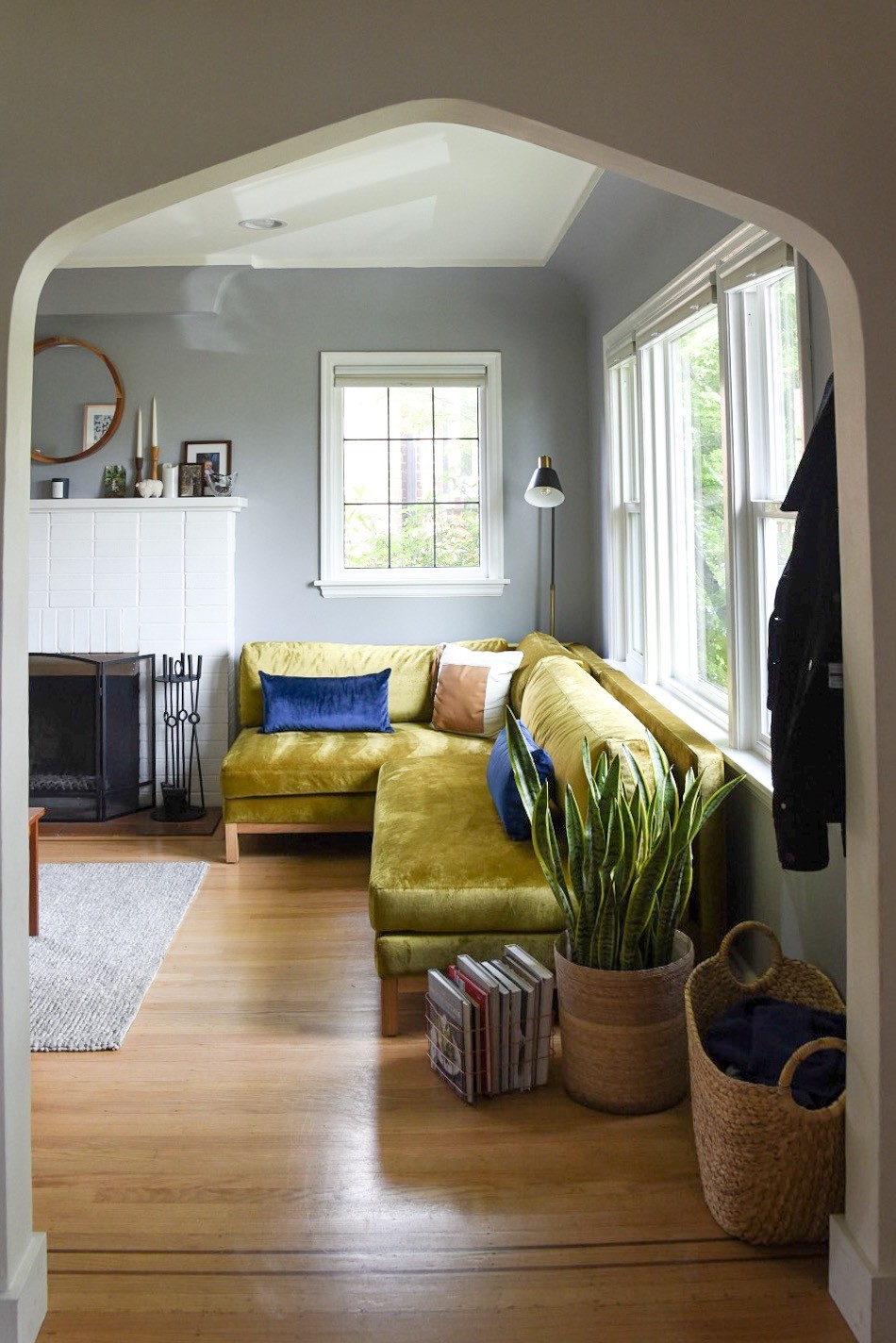
Nonetheless, aside from acoustical treatments, there are a few little things you can do to address sound reflections in any listening space. If you have hardwood floors or tile, simply placing a large rug between the speakers and the area where you’ll be sitting can help minimize some of the unwanted reflections off of a hard floor. Keeping that same space as free from large furniture as possible can also help. Furniture made of hard material can lead to more reflections whereas furniture made of soft material can actually absorb the sound. Too much of either will lead to some level of distortion. Keeping the space clear can help you avoid that issue to some extent.
Windows can also lead to a lot of unwanted reflections and add an unwanted brightness to your music. For example, we have a large window behind our sectional and sound from the speaker will naturally reflect off of the windows and back into the room. Simply closing your blinds during a dedicated listening section can help address that problem.
Ultimately, we understand that not everyone wants a dedicated listening room or to let their listening experience dictate the layout and arrangement of their room. Nonetheless, we hope this guide was able to help you get the most out of your listening space — wherever that may be in the home.
As a final note, don’t forget to practice proper maintenance for your records. Check out our guide: How To Clean Vinyl Records.
And if you’re ready to upgrade your seating, Interior Define is celebrating its annual sale August 23rd- Sept 23rd, offering a 15% discount on all styles including sofas, chairs, ottomans, dining and upholstered beds. That means you can get one of their beautiful, fully custom high quality sofas for under $900. We love ours so much!

